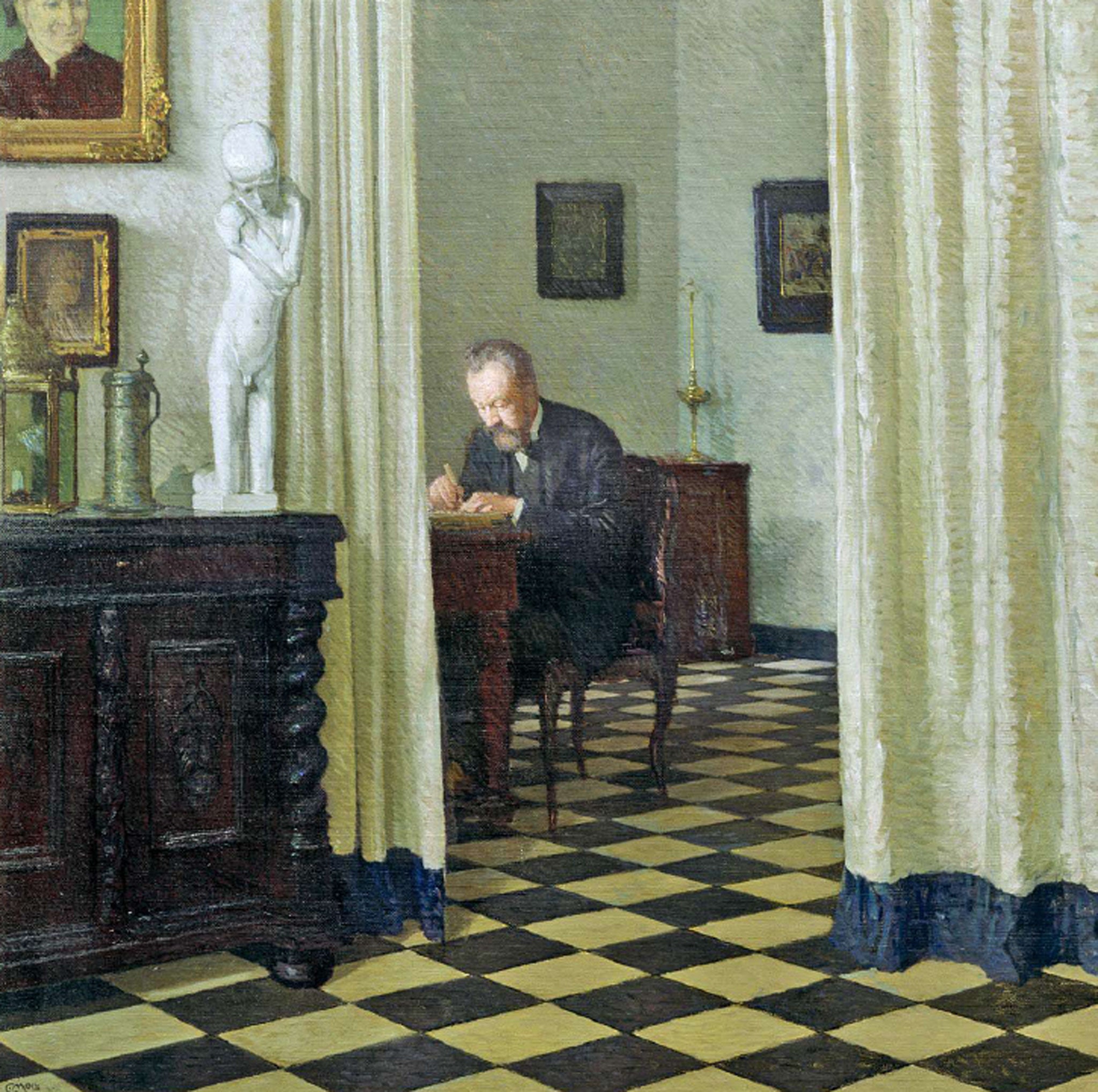Great works: Self-Portrait in his Study, 1906, By Carl Moll
Various Viennese painters are currently showing themselves off in a brilliant show entitled Facing the Modern at the National Gallery, including this portrait by Moll

Your support helps us to tell the story
From reproductive rights to climate change to Big Tech, The Independent is on the ground when the story is developing. Whether it's investigating the financials of Elon Musk's pro-Trump PAC or producing our latest documentary, 'The A Word', which shines a light on the American women fighting for reproductive rights, we know how important it is to parse out the facts from the messaging.
At such a critical moment in US history, we need reporters on the ground. Your donation allows us to keep sending journalists to speak to both sides of the story.
The Independent is trusted by Americans across the entire political spectrum. And unlike many other quality news outlets, we choose not to lock Americans out of our reporting and analysis with paywalls. We believe quality journalism should be available to everyone, paid for by those who can afford it.
Your support makes all the difference.What is an artist looking for when he paints himself? Self-portraiture is a form of self-definition. Van Gogh, in that celebrated self-portrait of 1889 that you can see at the Courtauld Gallery, seems, with his mutilated and bandaged ear, to be proclaiming himself a tragic visionary, a wounded slave to his artistic destiny.
Over at the National Gallery, various Viennese painters are currently showing themselves off in a brilliant show entitled Facing the Modern. Arnold Schoenberg, that Modernist composer and self-taught painter, represents himself with a shocking blue head in order to remind us that he is the embodiment of a music which is utterly set apart from anything that we might hitherto have experienced.
Schiele shows himself off as a kind of tortured animal, all twisty flesh and bone. Friedrich von Amerling is in profile, wearing a splendidly well-defined velvet jacket, and holding palette and brush, the tools of his trade – there are alluring splashes of red on that palette – and perhaps demonstrating to potential clients how they too might look when painted side-on, with the light giving warmth, nobility and sculpted definition to their handsome heads...
But what are we to make of this portrait, also in that show, by Carl Moll? This too is part of the cunning game of artists' self-portraiture, but it is by no means evident that this is the case because of the way in which Moll has chosen to present himself. First of all, we look at the shape of the painting, and its gilded frame. It is square, unlike most of the paintings in this show, and its squareness immediately invests it with a kind of dependability. It never, unlike many others, sets our teeth on edge.
Moll is not close to us. Unlike, say, Schiele, he does not exaggerate the strangeness of his individuality; he does not ratchet up his self-presentation to near fever pitch. He sits at his writing desk, his noble head illumined by the light from a window we do not see. That light gives great particularity to the head. The man neither postures nor self-preens. He does not look at us, pleadingly. He wears a three-piece suit, a bow tie, and he holds what may be a pen. He appears calmly intent upon what he is doing. The pose seems to say: this may be a dependable pair of hands if you might wish your portrait to be painted. It is the calibrated portrait of an artist who is also something of a sober, successful, dependable entrepreneur.
The title describes this interior as the artist's study, which takes us a little by surprise. We are more accustomed to seeing artists in their studios. This could be any harmonious domestic interior, with painter and artworks. It is certainly not a near bedlam of a place where Moll is accustomed to bearing his soul. It is harmonious, restrained. There is no hint of the mess of making. The space is not psychologically contested. There are artworks on display, and relatively modern ones too – Van Gogh's portrait of his mother hangs at the extreme top left, which is an interesting demonstration that, thanks to the Parisian dealer Vollard, Van Gogh himself is already known and collected not long after his death.
There is also that sculpture by George Minne next to the pewter tankard. It a ghostly, tortured, kneeling pose – the way in which those arms wrap back around the shoulders put us in mind of the human torments of Schiele's models – but even this looks sober-suited within its context.
About the artist: Carl Moll (1861-1945)
Carl Moll trained at the Vienna Academy of Fine Arts and privately with the painter Emil Jakob Schindler, whose widow he went on to marry. As a result of this match he became stepfather to Alma, who would in her turn become the wife of Gustav Mahler. He lived in the fashionable 19th District of Vienna.
Join our commenting forum
Join thought-provoking conversations, follow other Independent readers and see their replies
Comments